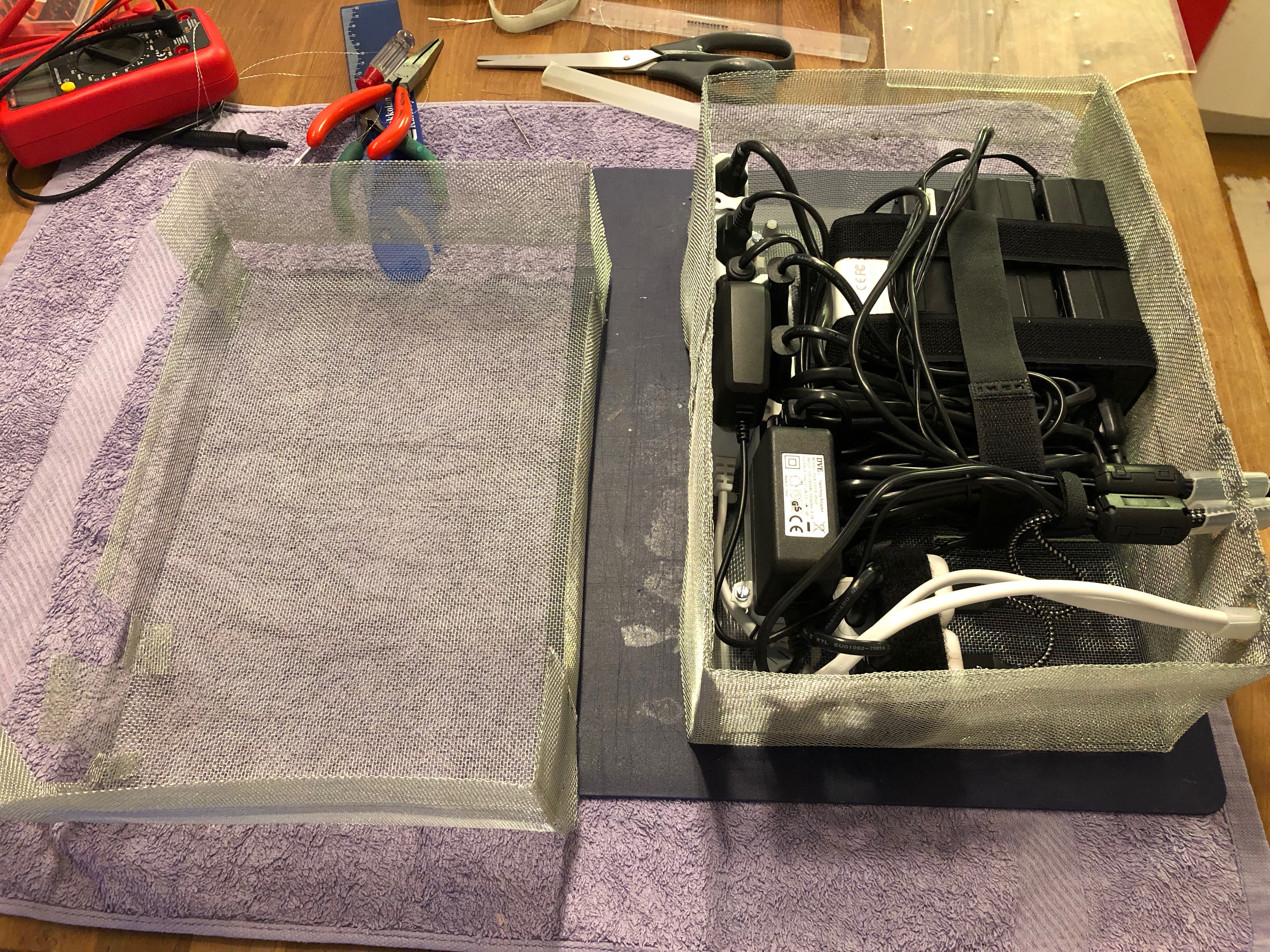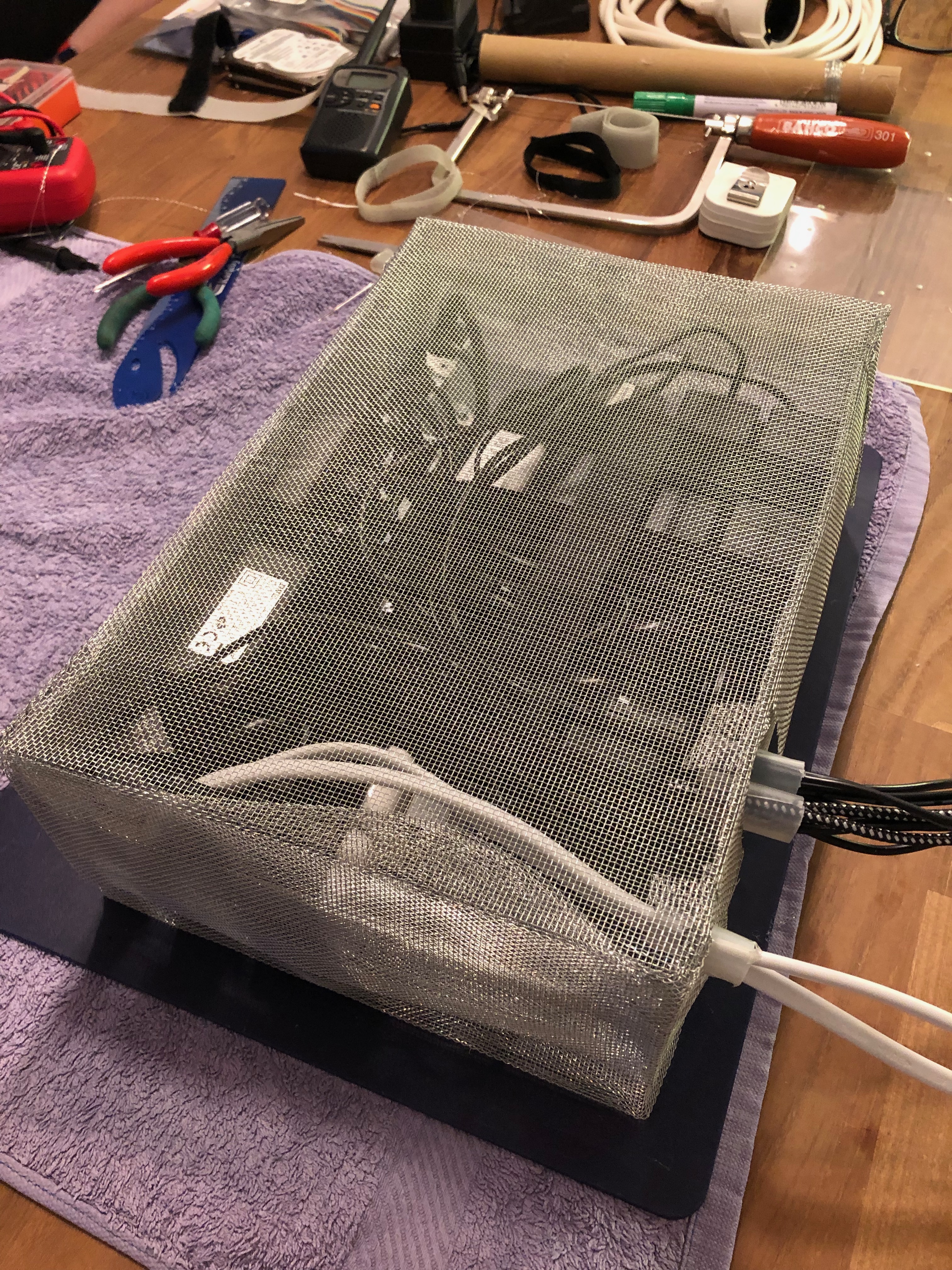One problem in my system is that I need to power it using cheap switched-mode power adapters. They are – well, cheap, universal, small, easy to get – and a huge source of wideband HF interference.
The best solution would be to replace all these power supplies with real transformers and linear regulators, but for my project they are way too heavy and big. I need to have 8 different power sources from 5V to 24V and one of the power adaptors needs to be able to communicate with the system itself to automatically choose the power level (USB-C powered SoC computer).
So, there must be some way to – if not totally get rid off – but at least to get the noise level down.
I decided to test if a cheap metal mesh would be enough. I got 60cm x 200cm roll with 0,9mm mesh size with 15 euros.
After few hours (and very painful finger mutilation – oh those spikes!) I had a test “box” that I could use to test if this kind of shield is enough to isolate most of the HF interference these switched-mode power adapter causes.
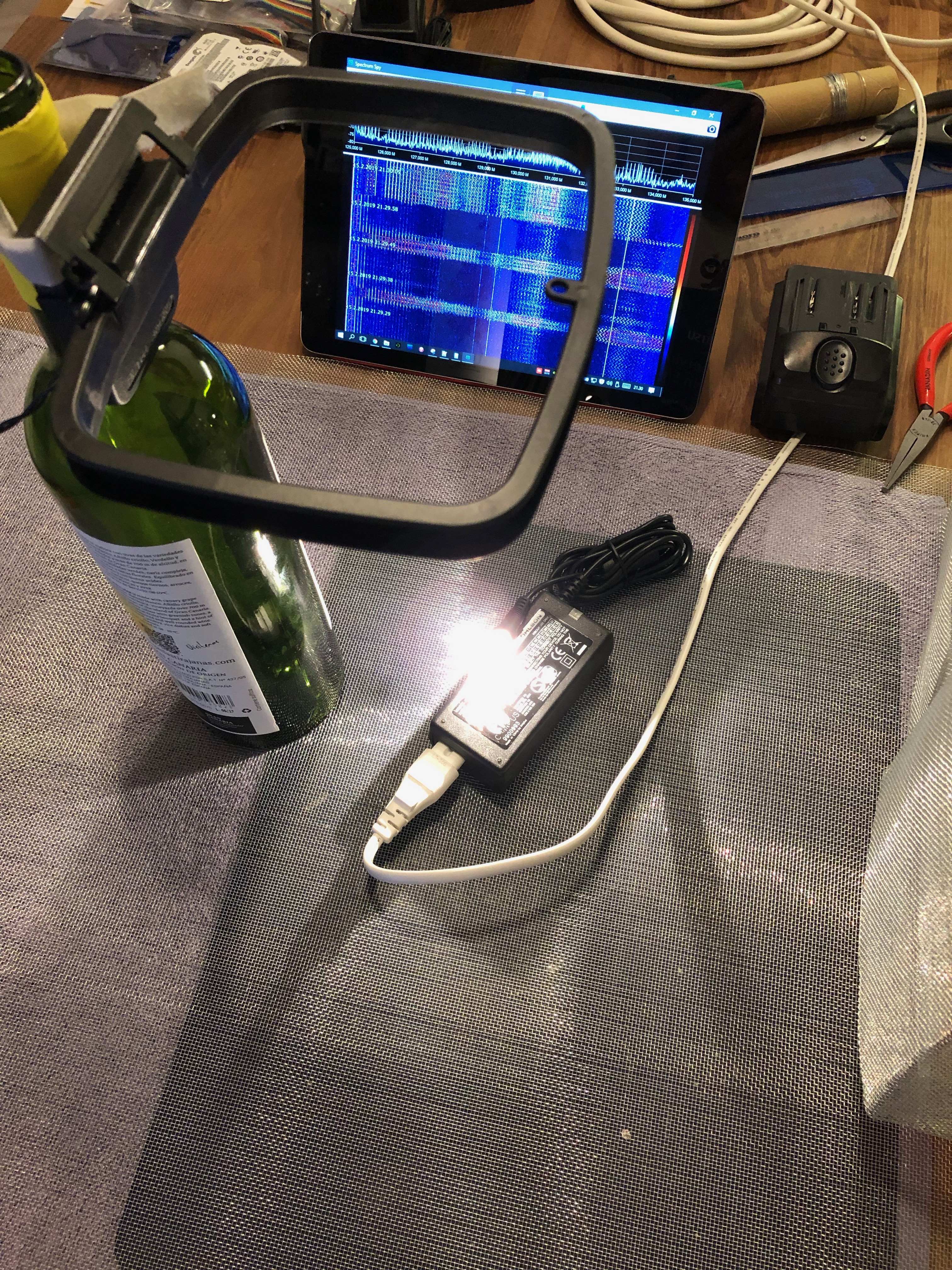
I covered a table with the metal mesh, then used empty wine bottle as an support for small loop-antenna. The antenna was connected via DownConverter to AirSpy Mini so that I can see what happens down there in HF (VLF) range.
From the power adapters I have I selected the most noisy one for this test. A halogen lamp was used for the load and the power adapter was placed so that is was directly under the loop-antenna – approx. 30cm from the antenna.
The software I used for measuring was SpectrumSpy, really simple yet powerful small software that comes with SDR# that can be used to monitor large block of spectrum at once. It only draws the waterfall, so no sound is extracted from the radio.
Test results – were AWESOME!
Yes yes, I know that this is the basic Faraday’s cage -sort of, but still I was very surprised about how well it was able to ‘clean the band’.
Here is 10MHz wide band starting from 0Hz ending at 10MHz. Note that because of the DownConverter the scale in the picture is +125MHz higher than the actual tuned frequency, so 125MHz = 0Hz and 135MHz = 10MHz.
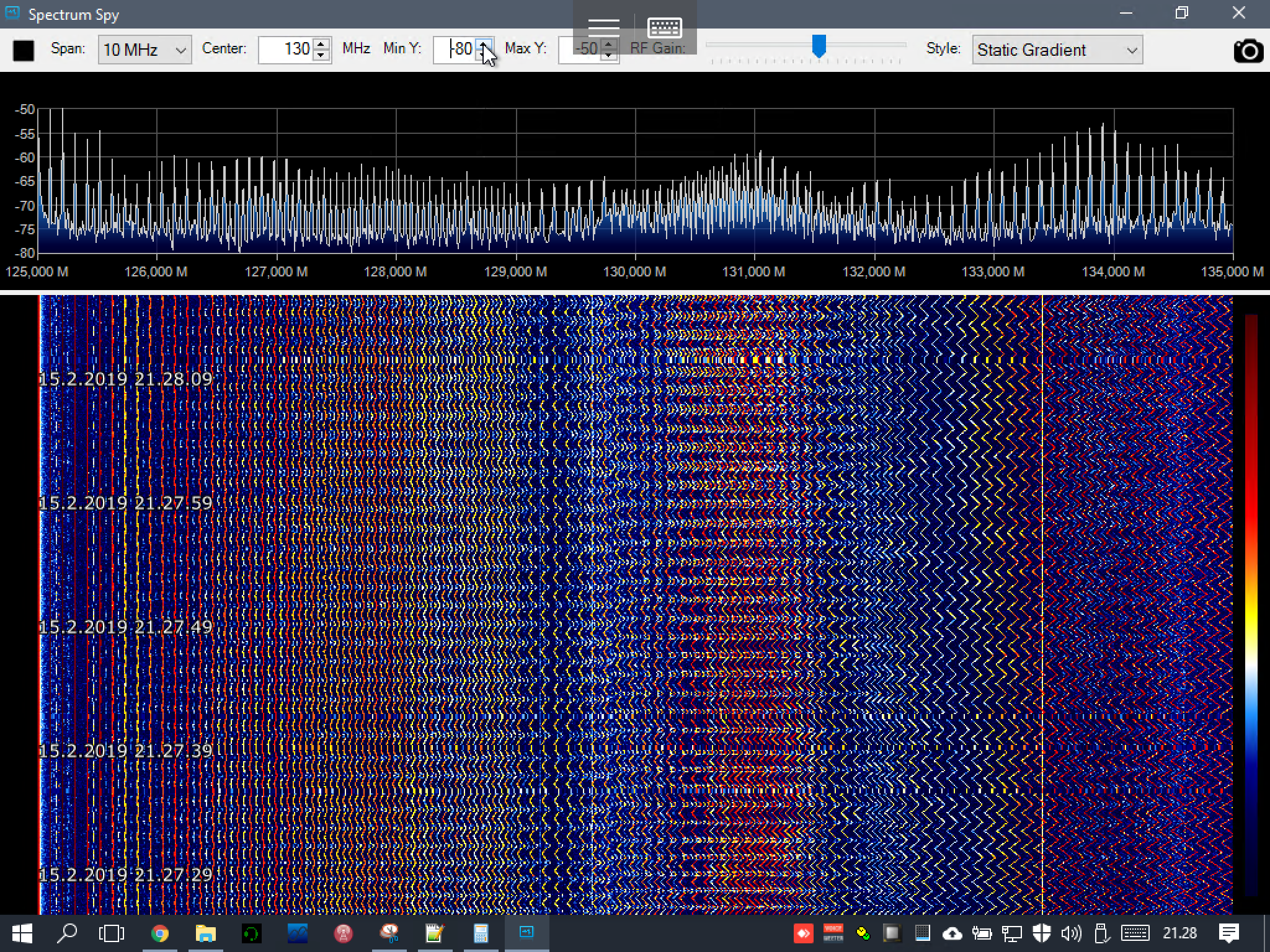
Time to hide the power supply just by placing the cage cover over it. Note that there is no grounding whatsoever in this system, just a metal mesh on wooden table. Look at that iPad screen – Wow! Just covering the power supply, no grounding of the mesh and huge difference!
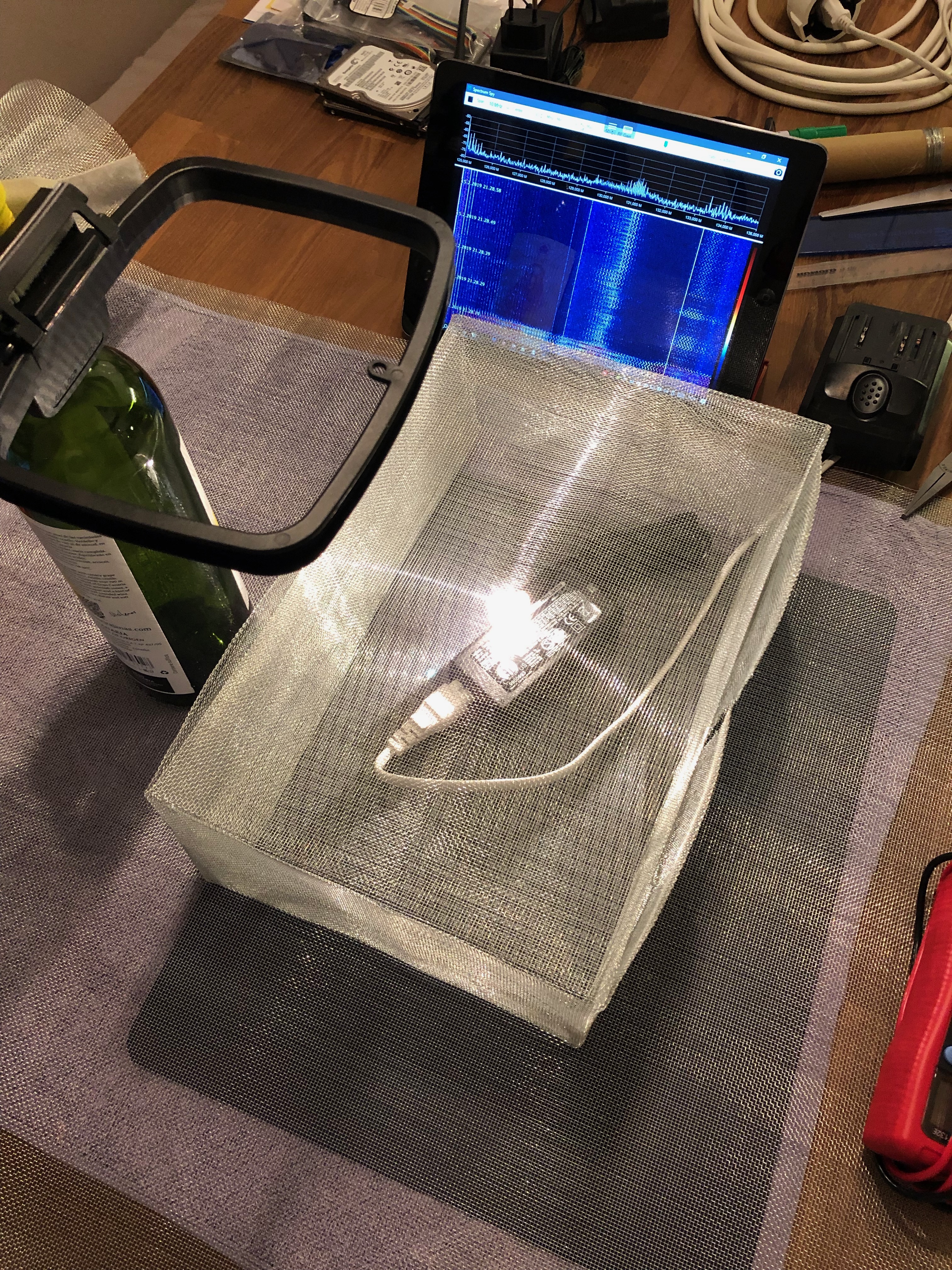
This was so promising that I wanted to take the test one step further and create a very AdHoc grounding for the metal mesh to see if it helps at all … and it did.
This is the SpectrumSpy view of 0Hz – 10MHz with me ‘grounding’ the mesh with my both hands – is this perhaps called “The nerding of the mesh?” 🙂
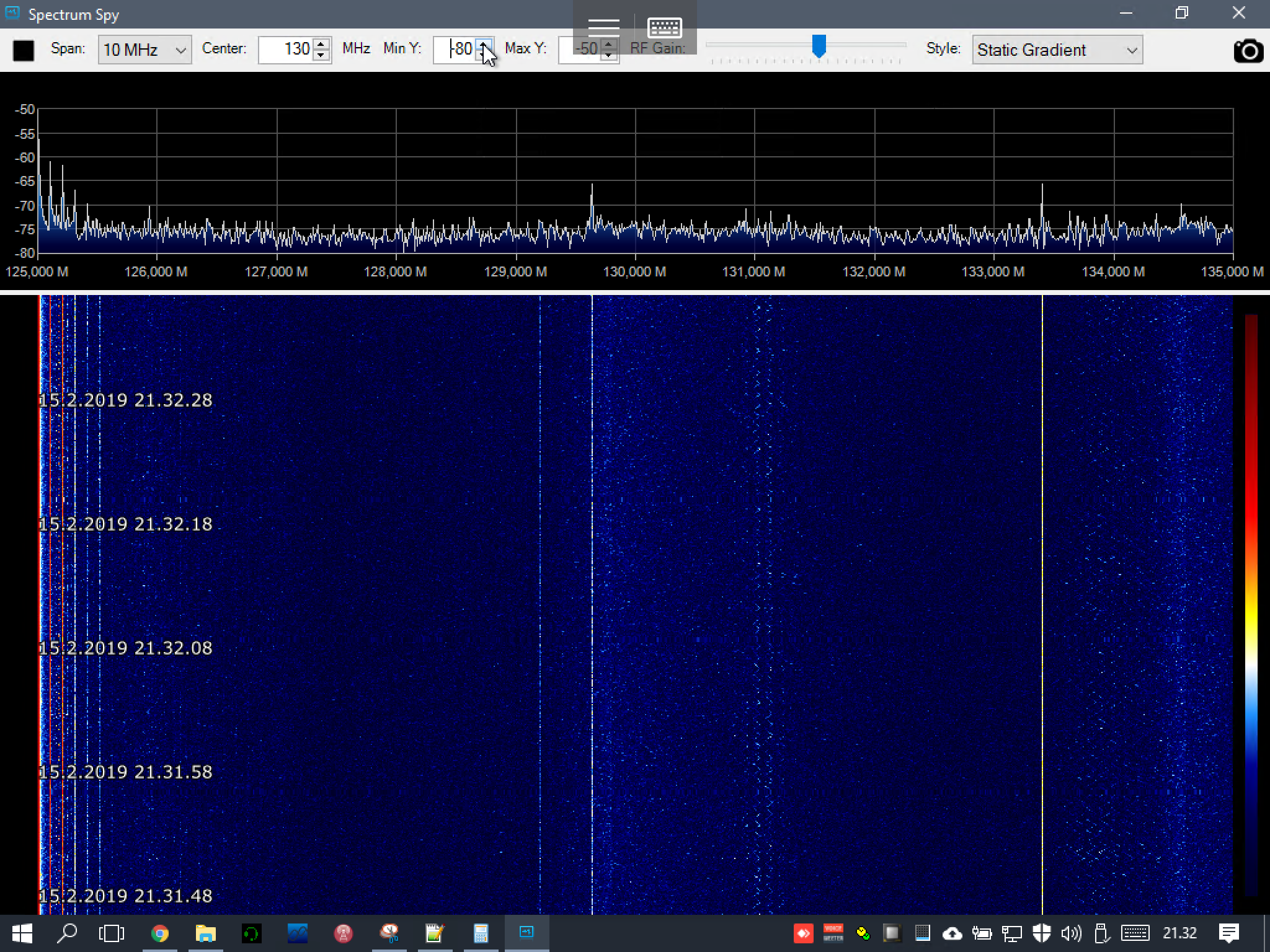
This was indeed something I did not expected to see. Just 30cm above the veeeeery noisy power supply and the whole band is almost clear.
Here is the same in one picture, the mesh cover removed and then put back with grounding (me).
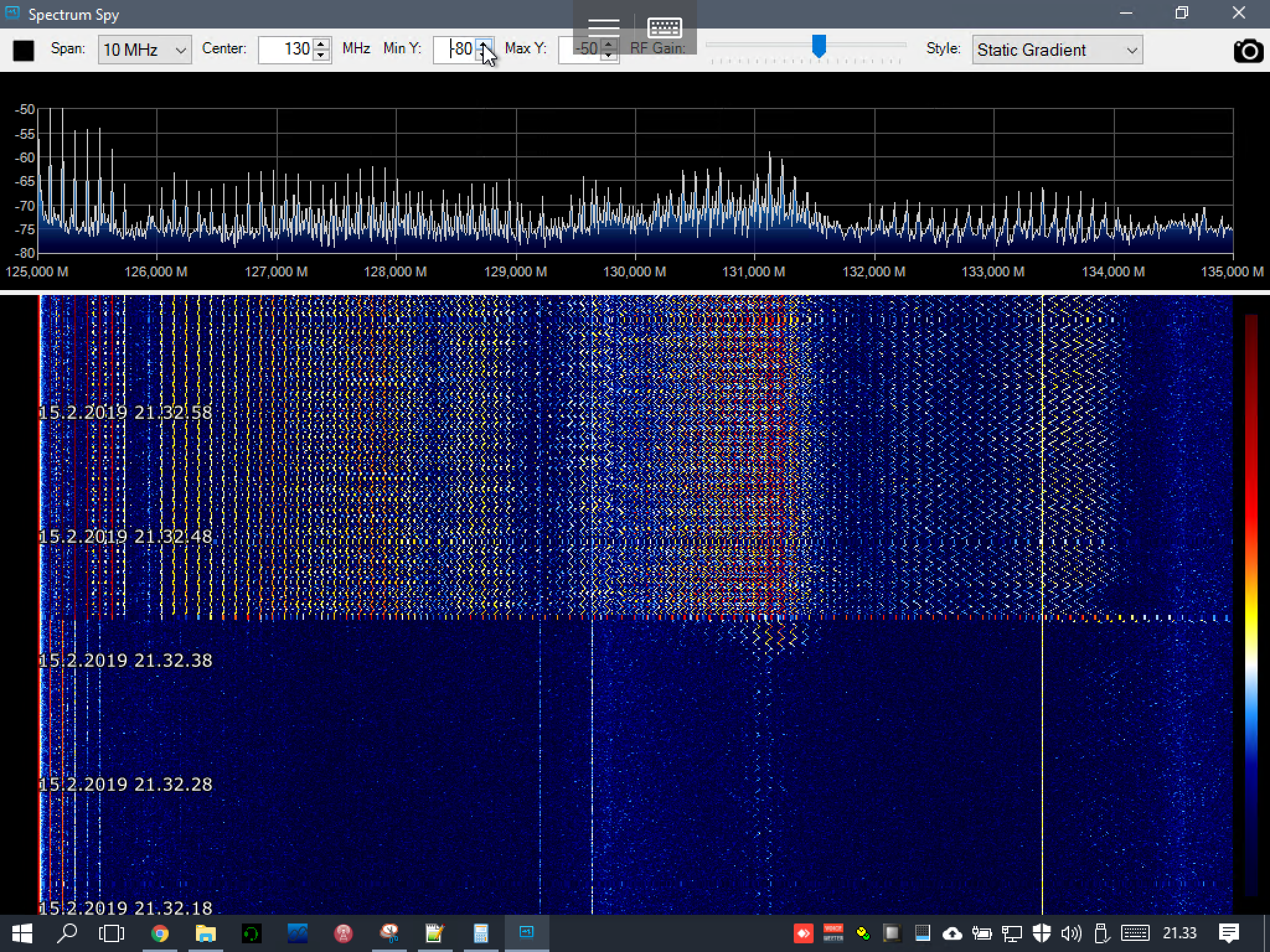
Yes, oh yes – I think I found a solution to get rid of most of the HF interference caused by these yet wonderful but also very noisy power supplies.
Time to create a full cage with all power supplies … more painful finger prickling 🙂
